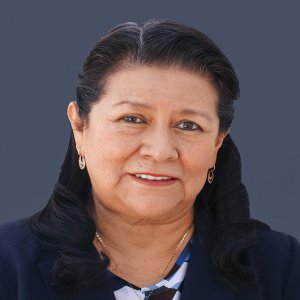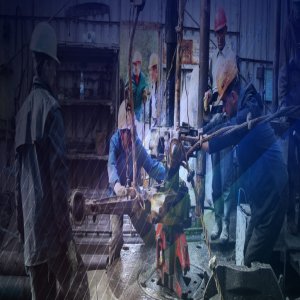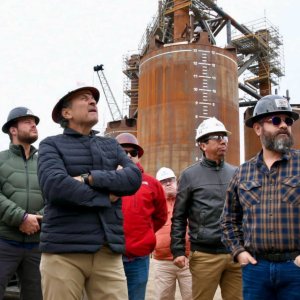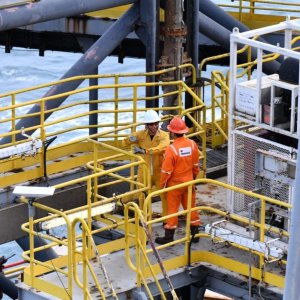Taking Stock Before Next Big Step

STORY INLINE POST
Q: What are your most important achievements in terms of field development and block performance?
A: In 2019, we began a restricted tendering process to drill Tajon-2, an HTHP deep well. The well has a TD of 6,189m, placing it in the JST. It was drilled by a Mexican drilling company, which was supposed to have delivered the well by July 2019 but there were major delays. Fortunately, its total depth has been reached and we are in the process of cementing the seven-inch liner. We are expecting this well to produce 8,000b/d.
Tajón is interconnected PEMEX’s separation battery in Puerto Ceiba. PEMEX collects its fee from transportation, processing, conditioning and other services. We operate under a hydrocarbon purchasing agreement with PEMEX for Tajón. Once we can guarantee the success of Tajón-2, we will begin the drilling process for Tajón-3, likely by the end of 2020. Several companies have shown interest in drilling this new well. We have learned a lot from Tajón-2, information that will be implement in Tajón-3. We will hopefully be able to keep this incremental improvement going throughout our entire drilling campaign. This will not be as aggressive as that for Fortuna Nacional because of how deep and complex these wells are and the time needed to drill and develop them. Our Tajón drilling campaign will be, to some degree, aggressive but also respectful of the reservoir. Tajón possesses very special geographical characteristics. 66% percent of the contractual area is onshore, and 33% is offshore, located in the Gulf of Mexico. This would eventually allow us to build infrastructure on our own, or through a contractor or partnership to process our own hydrocarbon resources without requiring PEMEX’s involvement.
The Fortuna Nacional field is also located in Tabasco. Its wells are much shallower than Tajon’s, averaging 1,600m in depth. These wells can be drilled in 15 to 25 days and are known as tertiary wells. This field produces condensate, a very light oil of 54 API degrees. We are interconnected to PEMEX infrastructure at the Shishito complex, which collects condensate and gas. We have had difficulties sending our product to PEMEX due to back-pressure issues. As a result, we are now exploring alternate venues to increase and market production. Fortuna Nacional’s location is positioned to supply gas for the Yucatan Peninsula through PEMEX or by connecting to Engie’s Mayakan pipeline, which crosses our field. It is located 200m away from our battery.
Fortuna Nacional’s drilling campaign will have to be much more aggressive than Tajon’s. We will drill at least two new exploration wells during 2020. This will lead to a significant increase in production. We have heard key players in various sectors expressing interest in investing in Fortuna Nacional due the value of these two resources being produced. A Mexican drilling company drilled the FN-19 well and we are very happy with the results. Fortuna Nacional’s wells cost around US$3 million and are simple to drill.
Q: What are your upcoming tendering processes involve?
A: Our next tendering processes will involve turnkey contracting or integrated service contracting, paid out in phases. Each phase is paid upon completion.
Q: How do you work under PEMEX’s infrastructure and purchasing agreements?
A: Infrastructure is the achilles heel of the Energy Reform. PEMEX’s infrastructure management and development is limited. The company chooses to increase production rather than provide infrastructural maintenance. PEMEX’s infrastructure has deteriorated throughout time. Operators like us must work under these infrastructure conditions and need to manage limitations in our production because these deficiencies will not let you deliver. This forces us to be on the lookout for alternatives or alliances. I believe that if PEMEX’s infrastructure were managed by a state-owned autonomous entity that could generate its own revenue flow and invest in infrastructure it would relieve the strain on PEMEX and create benefits for the industry. Having said this, it might even make sense for us to invest in PEMEX’s infrastructure because it would allow our production to flow more freely. Another option is to forge alliances with infrastructure companies, through which one could provide processing and conditioning for their own crude and gas. This could also allow them to manage their own commodities so that they can export or add them to the production of a larger operator. These are the only options I see available to us and other operators.
Q: How have regulators helped you manage field development issues and what kind of additional assistance could they provide?
A: CNH granted all companies that won contracts in Round 1.3 a two-year extension. Part of the reason for the extension was because we were not allowed to work. Our proposals to landowners would always get rejected or answered with unreasonable demands. Those negotiation processes would eventually reach the regulators, who had their own budget charts to determine fair compensation. Other issues that prevented us from starting were matters regarding unions and local communities. The process needed to address them delayed our initial field development work. All work requirements were met, but we still required extension. This situation was the same for all other negotiations and landowners as well.
In terms of assistance, these companies should have access to financing from Mexico’s development banks.
Q: Why do you work with Mexican drilling contractors?
A: We look for technical and operational capabilities. We also look for financial muscle as to avoid any delays and hiccups during the operations.
Working with Mexican local content is important for us because we get to choose our contractors and provide educational courses to local communities and suppliers. This approach sometimes limits the availability of technology that has not made it to Mexico yet, but we try to connect foreign and Mexican companies to also introduce new technologies and apply them to our projects.
Q: In what ways do private operators have an advantage over PEMEX in attracting contractors and service providers and fulfill payments?
A: Perseus Energy does not compete with PEMEX. If anything, we wouldn’t see ourselves as a contractor or service provider to PEMEX. In fact, we like to think of ourselves as PEMEX’s partner that produces hydrocarbons and delivers to PEMEX. We hope to continue doing so because the prices in our purchasing agreements with the NOC are quite fair. PEMEX provides a service for us, they gather, distribute and sell hydrocarbon resources through transparent tabulations that consider market conditions and crude quality, among other factors.
Q: What are your most important goals for 2020?
A: We would hope to get Tajon-2 to its production phase safely and sustainably and make it productive enough to generate the profit necessary to continue developing the field and drilling new wells. This would also be good for Mexico because the royalties we pay for each one of these barrels can represent enormous revenue for the federal government that never would have existed without the bidding rounds. For Fortuna Nacional, our goal is to execute a drilling campaign that looks after communities and the environment, making the field as profitable as possible.
Perseus Energy is an independent Mexican oil and gas exploration and production company that was awarded the tenders for the Tajón and Fortuna Nacional blocks in Round 1.3








 By Pedro Alcalá | Senior Journalist & Industry Analyst -
Wed, 04/15/2020 - 16:53
By Pedro Alcalá | Senior Journalist & Industry Analyst -
Wed, 04/15/2020 - 16:53
















